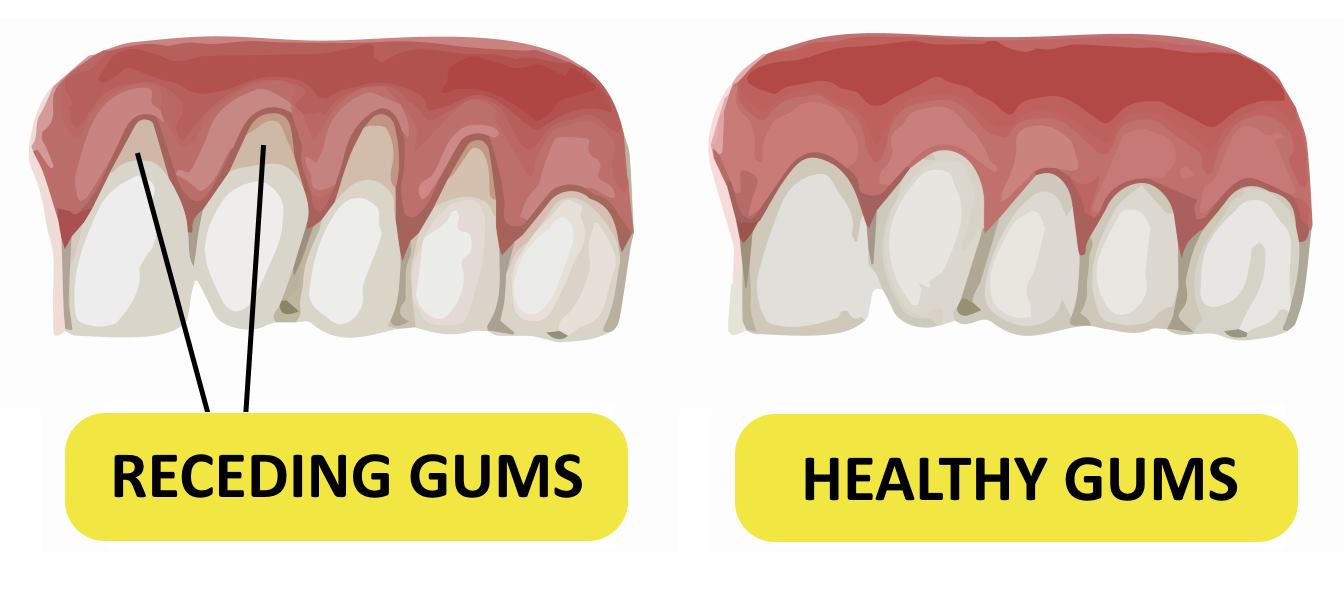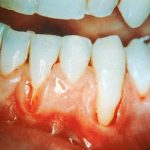How To Reverse Receding Gums

Receding gums or gum recession is a condition wherein the margin of gum tissue surrounding the teeth pulls back which exposes more of the teeth specifically the root of the tooth. Patients that experience receding gums usually have other signs of gum disease. When the gum recedes there are many other potential dental concerns that happen to teeth. Gaps start to form in between teeth as well as in between teeth and gums which are perfect places where bits of food may settle. This becomes perfect places where bacteria thrive and grow causing further gum infections and gum disease.
People gradually develop gum recession over time as a result of aging and gum infections. Here are common conditions that lead to receding gums:
Periodontal disease
Periodontal diseases are caused by bacteria that ultimately destroy gum tissue and nearby bone that keeps teeth in place. When gum disease is ignored, this may ultimately lead to recession of teeth. There are different treatments for periodontal disease and one of these is antibiotic treatments. Your dentist may prescribe antibiotics to cure infections and this should be followed very closely to prevent re-infection.

Genetics
Believe it or not, some people are more prone to develop receding gums as a result of their genes? There is a large number of the population that are very susceptible to developing gum disease which makes them a likely candidate for receding gums no matter how they flush, brush or take care of their teeth.
Smoking
A person who smokes is more likely to develop this condition. Tobacco tends to deposit sticky residue on teeth and this is stuff that is very difficult to remove. More and stickier tar deposits can lead to receding gums.
Changes in hormones
Hormonal changes especially in women can bring about sensitivity in the gums; the gum tissue tend to be more vulnerable to gum recession. Changes in hormones are responsible for different stages in a woman’s life like puberty, pregnancy and menopause; these are the stages in woman’s life when the gums are very vulnerable to pain, swelling and infection.
Aggressive tooth care
Aggressive brushing and tooth care can gradually recede your gums as well. Excessive or too vigorous brushing can lead to scratching your enamel and will also contribute to receding your gum line. However, insufficient dental care like brushing, flossing and frequent visits to the dentist will lead to gum recession. Hard substances that are made of dirt and food particles can build-up in between teeth which can recede the gum line.
Grinding teeth and clenching plus other activities
These involuntary movements tend to put pressure on teeth causing them to recede. Other practices like using tongue or lip jewelry can also lead to receding gums. Hard jewelry can brush or hit the gums repeatedly and can injure, inflame and recede the gums.
If you notice your gums receding then you should consult your dentist right away for the ideal treatment. You should never delay consultation otherwise terrible complications may happen in the future.
How to Reverse Gum Recession
Gum recession is a condition that affects many people. It can change the appearance of your smile, make your teeth feel sensitive, and even put you at risk of tooth decay. Fortunately, there are ways to reverse gum recession. Use these tips to stop gum recession in its tracks and help your gum tissue to recover.
Use a Softer Toothbrush
One of the main causes of gum recession is applying too much force when you brush your teeth. You can reduce the pressure on your gums by switching your regular toothbrush for one with extra-soft bristles. Replace your toothbrush once every three months so you don’t end up scraping frayed bristles against your gums. Finally, remember to be gentle when brushing. You only need to apply very gentle pressure to make your teeth clean.
Wear a Night Guard
Many people grind their teeth at night. If your partner says you make a grinding noise in your sleep, or you often wake up with an ache in your jaw or head, ask your dentist to make a night guard to protect your teeth while you sleep. Custom-made night guards are comfortable to wear and prevent grinding forces from wearing away your gums.
Stop Smoking
Smoking or chewing tobacco puts you at high risk of gum disease, which is one of the most common causes of receding gums. If you use tobacco, talk to your doctor to get help to quit. Using a nicotine patch or attending a smoking cessation support group might help you cut back on cigarettes and ultimately kick the habit. Stopping smoking gives your receding gums a chance to recover.
Get Treatment for Gum Disease
To prevent gum recession getting worse, you need to treat any gum disease that is present in your mouth. Your dentist can recommend mouth rinses and special toothpastes that can fight the bacteria and reduce swelling in the gum tissue. These products can help bring gum disease under control. If your gum disease is advanced, you may need a treatment known as scaling and root planing, which involves cleaning the bacteria out of the gum pockets around your teeth.
Ask Your Dentist About Gum Grafting
To reverse gum recession that is very advanced, you may need a surgical procedure known as a gum graft. In this procedure, a dentist takes tissue from your palate and stitches it into place on the recessed parts of your gums. The grafted tissue covers the exposed roots of your teeth, so you should experience less sensitivity. After a couple of weeks of healing, your dentist will take out the stitches, leaving you with a healthier and more attractive smile.
